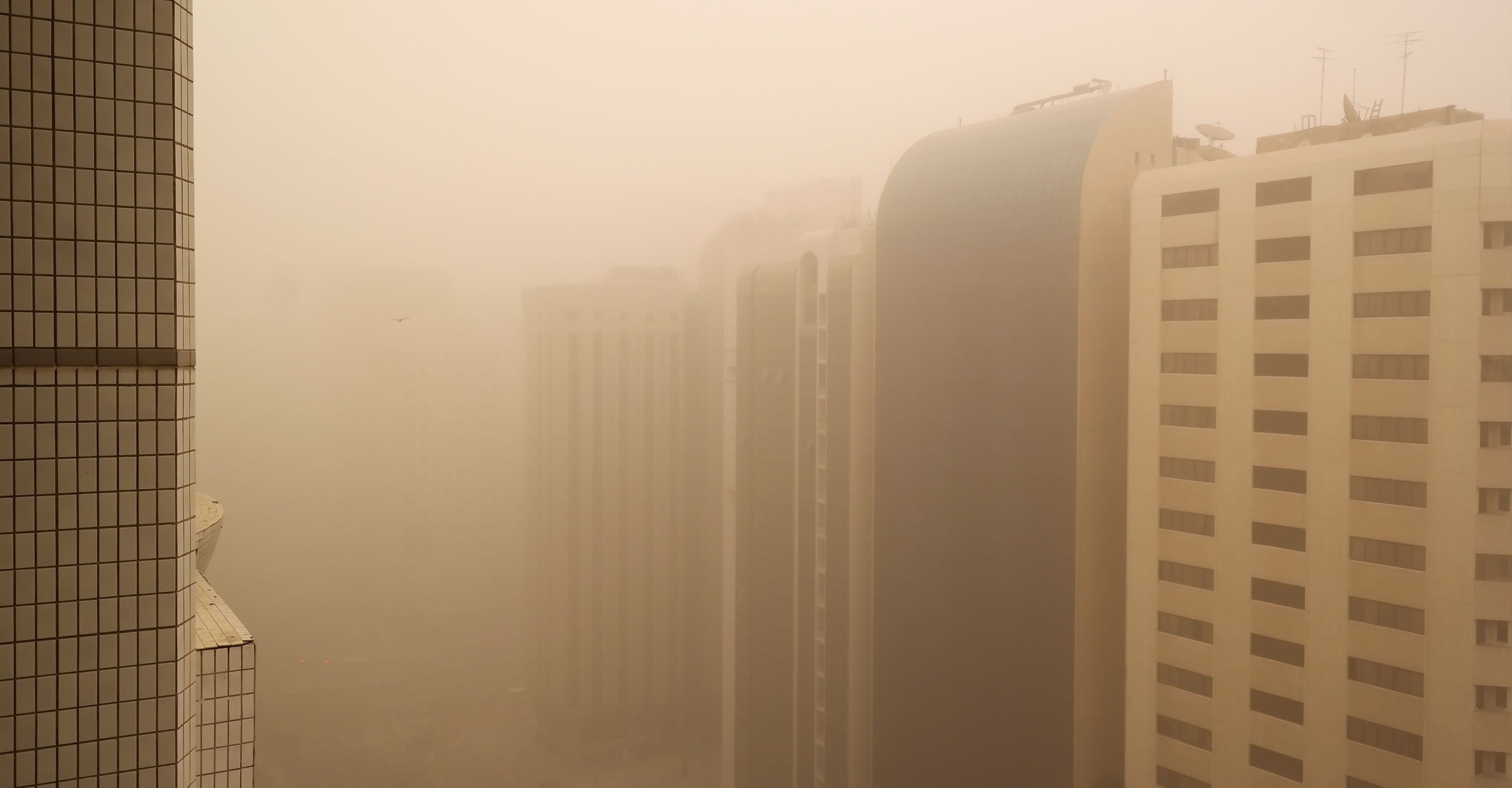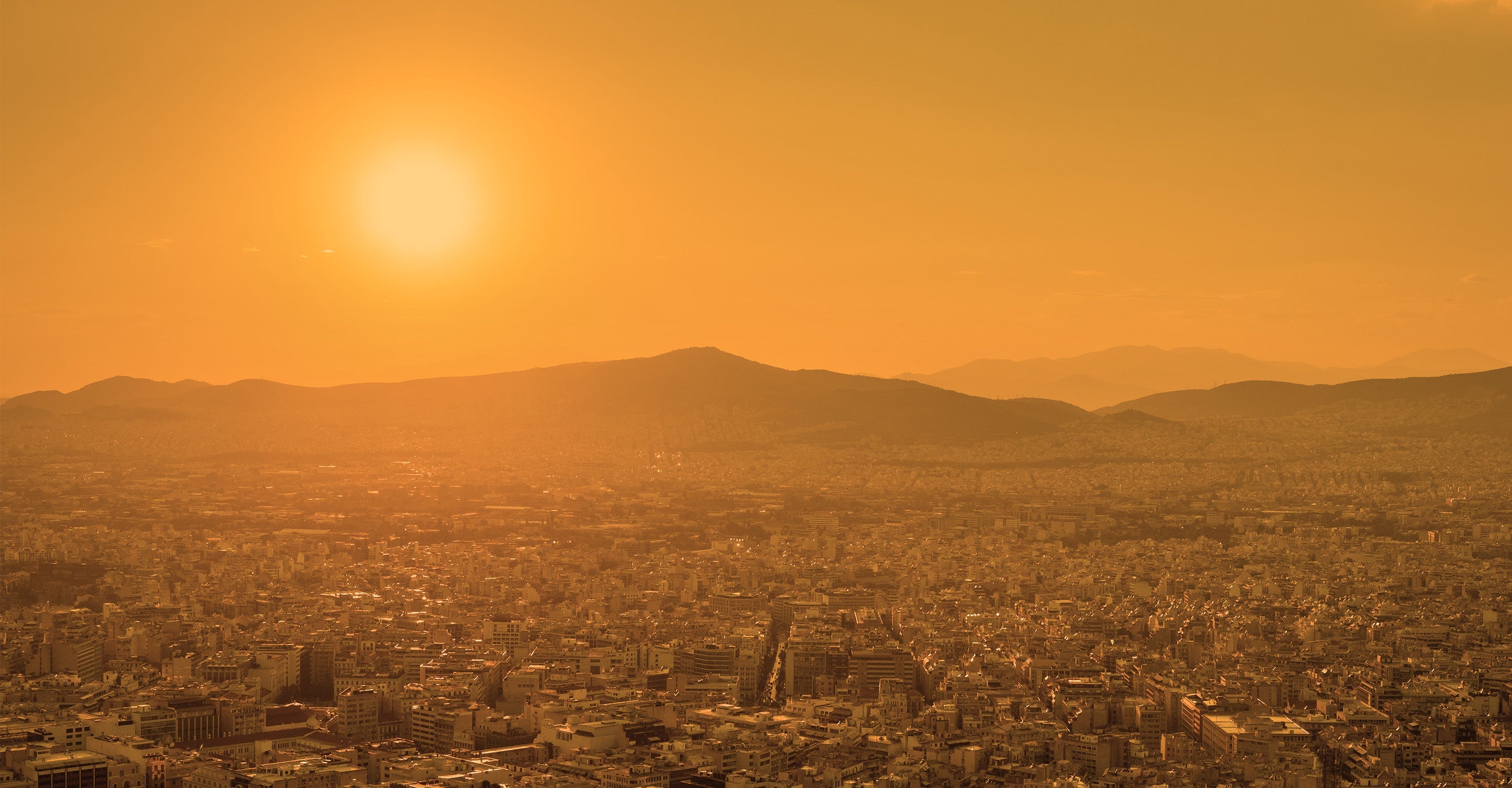Semarang air quality map
Live air pollution map of Semarang
113K people follow this city
Full screen
Contributors
1
Stations
1
Contributors category
1
Government
0
Non-profit organization
0
Educational
0
Corporate
0
Individual
0
Anonymous
Most polluted air quality stations
| # | station | US AQI |
|---|---|---|
| 1 | SEMARANG Station | 80 |
community highlight
Semarang most followed contributors
Health Recommendations
| Sensitive groups should reduce outdoor exercise | |
| Close your windows to avoid dirty outdoor air GET A MONITOR | |
| Sensitive groups should wear a mask outdoors GET A MASK | |
| Sensitive groups should run an air purifier GET AN AIR PURIFIER |
Become a contributor
Get an AirVisual Outdoor and contribute to collecting millions of data points for the Semarang map to track local air pollution
Understand air pollution and protect yourself
Semarang MAP AIR QUALITY ANALYSIS AND STATISTICS
What do the pollution readings on the air quality map for Semarang currently tell us?
The pollution readings that show on the air quality map above for Semarang, are given in the form of a US AQI figures. These figures are aggregated from several main pollutants that are found in the air throughout the world, and due to their prevalence, they are used in forming an air quality figure that can give significant insight into how clean, or how polluted the air currently is. As of late June of 2022, US AQI readings that were taken in Semarang included US AQI figures of 24 and 76, representing quite large gaps between the two areas that they were taken. The reading of 24 would place that particular area into the 'good' air quality rating bracket, and 76 into the higher end of the 'moderate' pollution rating bracket. Receiving a 'good' air quality rating requires a US AQI reading of 0 to 50, whilst a 'moderate' one requires 51 to 100. Whilst moderate readings can be ok for the general public, as the number starts to rise higher towards 100, certain people may start to experience respiratory distress, and as such, a reading of 76 may be harmful for certain, more vulnerable members of society in Semarang.
What pollutants go into forming the readings on the air quality map in Semarang?
As has been mentioned in the previous questions regarding the air quality maps, their function and how they can help people and certain groups throughout Semarang, US AQI is the figure used across the various reading sites that show up on the pollution maps for the city. Semarang has only a few air quality stations currently in action, and although this will grow in the future, they are adequate for the current time. The city pages that are also present for Semarang and other cities throughout Indonesia show the US AQI readings as well as the concentrations of other pollutants in the air, whilst the air quality map pages only show the US AQI readings. By getting a further understanding of what the US AQI reading is comprised of, users can thus know what chemical pollutants or particles they may be getting exposed to (although when it comes to particle-based pollution, the number of materials that fall into this classification can be extremely numerous, and as such only the more common ones will be touched upon in this question).
US AQI, standing for the United States air quality index (with the United States having a very stringent classification system and is thus more widely used, as other pollution classification systems can be more lenient and thus allow polluted air to be labeled as being ‘safe’ or ‘reasonable’ when in reality it may present more health risks to the population) is calculated from several main pollutants that are found throughout the world. The US AQI figure shown on the air quality maps is formed from the aggregation of nitrogen dioxide, sulfur dioxide, carbon monoxide and ozone, which is also known as smog when it accumulates in large enough quantities on the ground level, particularly near busy roads during times of intense sunshine.
Although a vital part of the upper atmosphere, when ozone accumulates on ground level, it can be extremely dangerous to breathe, causing dizziness, nausea and many other short and long term health effects, as well as contributing to an increase in the pollution readings on the air quality map. Lastly, the other pollutants used in calculating the US AQI figure are the two particle-based pollutants, PM10 (which covers larger or more coarse particles) and PM2.5, the more dangerous of the two which covers materials that are 2.5 micrometers or less in diameter, going down to sizes many microns smaller on occasion. Materials that can fall into the particulate based pollution bracket include metals, mold spores, bacteria, nitrates and sulfates, water or oil vapors, black carbon (the main component of soot and can sometimes be visibly seen around busy road areas, accumulating on underpasses and other similar places), as well as finely ground silica. These are for informational purposes, and the concentration levels of these pollutants can be seen on the city pages themselves. The air quality map pages will show the US AQI level, and thus when the figure is shown to be higher or moving up to unsafe levels during certain times of the year, the above-mentioned pollutants can be found in higher concentrations throughout Semarang and surrounding areas.
Are certain people more likely to benefit from using the air pollution map in Semarang?
Whilst all members of society in Semarang can most definitely benefit from referring to both the air quality map, or air pollution map pages, as well as the city map pages that show the pollution level as an average throughout the city (as well as giving forecasts and concentration levels of certain pollutants), there are those who due to some reasons, may need to monitor both their health and the air cleanliness levels more closely. For those that are more prominently affected, preventative measures may need to be put into action to stay as safe as possible from breathing any potentially harmful pollutants, looking at both chemical compounds in the forms of gases as well as ultrafine particles that can permeate the air, causing health issues as well as aggravating pre-existing ones amongst inhabitants of Semarang.
To go into more detail as to who would benefit from utilizing air quality maps and staying up to date with pollution forecasts (although it can be noted that Semarang generally maintains an appreciable level of air quality throughout much of the year, although as with all cities worldwide, it can be subject to sudden jumps in its pollution levels due to many reasons), they would fall into certain categories or demographics within the population of Semarang. They include people such as the elderly, who are particularly vulnerable to ailments that affect the respiratory tract, on occasion seeing simple or mild infections of the throat or chest turn into ones that lead to more severe complications. Air quality maps can allow elderly citizens within Semarang to be able to spot areas of higher pollution concentrations, and thus avoid them, significantly reducing the amount of haze, chemicals or clouds of ultrafine particles that one might come into in such areas. Once again, the pollution levels shown on the air quality maps in Semarang are generally very good, but can still be useful during times of excess pollution due to a lack of strong winds or rain in certain areas allowing pollutants from cars, industrial sites and power plants, along with ultrafine materials coming from construction sites all potentially accumulating under the right circumstances, which is when the air pollution maps can be of great use.
Others include young children and babies, so as such families who are taking care of younger ones can utilize the air quality maps to avoid any higher areas of the city, which can prevent young children from developing potentially lifelong health issues such as asthma, as well as preventing their aggravation. Pollen levels can count amongst the ultrafine particles in the air, with pollen splitting into smaller fragments and becoming part of the PM10 or even PM2.5 collective. In closing, others that benefit from the use of air quality maps include those with the aforementioned pre-existing health conditions (particularly of the cardiac or pulmonary variety), those with compromised immune systems, as well as individuals who have a hypersensitive disposition toward certain chemical compounds, gases or particles. Keeping up with air pollution forecasts on the city pages can allow users to pre-empt when there may be spikes in the US AQI levels, and as such the air quality map itself will show exactly where in Semarang these pollution levels are at their highest, so the most vulnerable groups of people can more easily avoid them, along with healthy individuals and those who wish to keep their pollution exposure to a minimum.
What illnesses can air quality maps help in preventing in Semarang?
When people continuously refer to air quality maps and their readings throughout Semarang, many health issues may be avoided as a result. With many studies going back decades having already linked numerous health problems directly to higher pollution exposure, by avoiding areas of the city that have higher US AQI readings present on the air pollution maps, individuals may potentially avoid such pollution-related ailments. In particular, those with pre-existing health conditions may benefit even more from the use of air quality maps in Semarang.
Semarang air quality data attribution
1Contributor
Government Contributor








